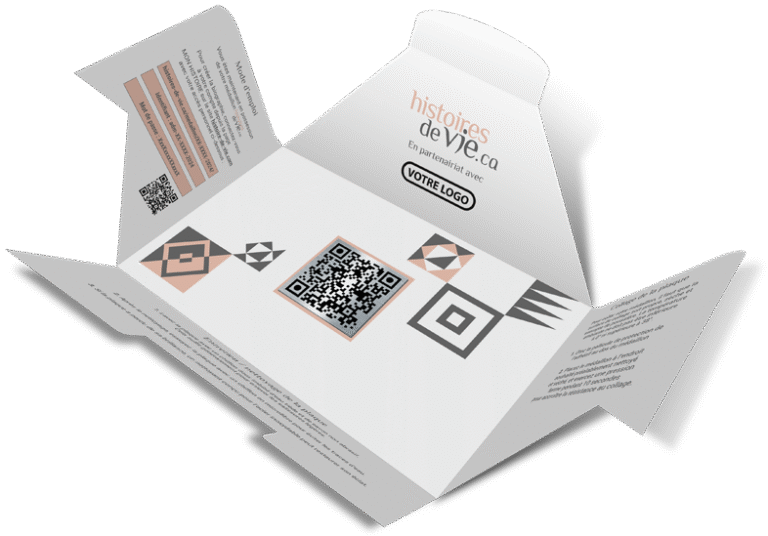Uses and Limitations of Social Media in Grieving

Social media has quietly reshaped how we navigate loss. While traditional mourning relied heavily on physical spaces and face-to-face support, today’s digital platforms allow people to grieve publicly, creatively, and collectively. As such, platforms like Facebook, Instagram, and TikTok have evolved beyond mere communication tools to become emotional lifelines for those coping with grief.
However, this shift brings both meaningful opportunities and notable challenges. To truly understand its impact, we must look at how social media assists the grieving process, where it falls short, and what innovations are emerging to fill the gaps.
How Digital Memorials Offer a New Kind of Closure
Transforming Profiles into Memorial Spaces
When someone dies, their social media presence doesn’t disappear. On Facebook, for example, a loved one’s profile can be converted into a memorialized account. This feature allows friends and family to leave messages, revisit photos, and keep memories alive in a familiar digital setting.
Creating Accessible Tributes
Unlike traditional memorials, these digital spaces transcend geographic limitations. Whether someone lives across the street or across the ocean, they can visit the page, share their grief, or simply pause to remember. As a result, digital memorials offer enduring comfort and accessibility that physical spaces may lack.
Announcing a Death and Sharing Memories Online
Instantly Reaching a Wider Community
Breaking the news of a death is never easy. However, social media simplifies the process. A single post can notify a broad network, ensuring that important news reaches everyone who needs to know—quickly and efficiently.
Building a Collective Remembrance
In the comments section of these posts, people share stories, memories, and heartfelt messages. These reflections become more than reactions; they form a shared narrative that enriches the legacy of the departed.
Streamlining Funeral Planning through Social Media
Using Events to Coordinate Details
Platforms like Facebook are not just for socializing—they’re surprisingly practical. Families often use private Facebook Events to share funeral logistics, including the time, date, and venue. Attendees can RSVP, discuss travel plans, and stay informed about any changes.
Connecting Across Distances
For families spread out across countries or continents, these digital tools become essential. They reduce confusion, minimize miscommunication, and foster a sense of unity during a fragmented time.
Expressing Grief Creatively Online
Telling Stories through Visual and Written Tributes
Grieving is deeply personal, and many turn to creative outlets for expression. Whether it’s a poem shared on Instagram, a video tribute on TikTok, or a photo collage posted on Facebook, these acts of remembrance provide both catharsis and connection.
These creative expressions resonate beyond the immediate circle. Friends of friends, former colleagues, or distant relatives may comment, share, or simply feel seen. In this way, social media helps cultivate an extended community of empathy and support.
The Hidden Challenges of Grieving on Social Media
Support That Fades Too Fast
While digital condolences often arrive quickly, they tend to taper off just as quickly. At first, there may be hundreds of comments and messages. Yet within days or weeks, that flood of support can vanish, leaving mourners feeling isolated in their ongoing grief.
Why Longevity Matters
Grief doesn’t follow a timeline. Because of this, some people turn to offline support systems, such as counseling, in-person support groups, or dedicated grief platforms that provide sustained assistance.
Navigating Privacy and Family Tensions
Conflicts Over What Should Be Shared
When one person shares a heartfelt post, another might feel exposed. Not every family member is comfortable with making memories or personal moments public. These differences in boundaries can lead to conflict.
Platform Control Over Data
Another layer of complexity arises when trying to manage the deceased’s account. Social media companies retain control over user data, and families may struggle to align platform policies with personal wishes. This raises both ethical and legal concerns that are often overlooked.
The Subtle Pressure to Perform Grief
Feeling Obliged to Share Publicly
In some cases, people may feel compelled to grieve visibly online—even when they would rather mourn in private. There’s a subtle societal expectation to post, respond, or acknowledge loss in a public format.
When Grief Becomes Performance
These pressures can lead to performative mourning. Instead of being a healing outlet, the act of sharing may feel like an obligation or a performance, adding stress to an already emotional experience.
The Commercialization of Digital Mourning
Services That Come at a Cost
As digital mourning grows, so do business opportunities. Companies now offer to curate memorial pages, animate old photos, or even turn digital memories into NFT-like keepsakes. While some services offer real value, others risk exploiting the vulnerable for profit.
Balancing Ethics and Innovation
Before using these services, families should ask tough questions. Who owns the data? Is the service transparent about costs? Does it honor the deceased’s dignity and legacy?
New Tools Responding to the Needs of the Bereaved
Platforms Like Collection-Souvenir
Recognizing the shortcomings of traditional social media, some services now focus entirely on grief. Collection-Souvenir, for instance, creates private, customizable digital spaces where families can upload messages, photos, and videos—all within a protected environment.
Culturally Sensitive Design
These platforms also offer flexibility. Whether someone observes religious mourning traditions or prefers a secular tribute, the experience can be tailored to reflect individual values.
Creating Enduring Legacies with Interactive Memorials
The Rise of Multimedia Biographies
Innovative platforms like Histoires-de-vie.ca allow users to craft interactive biographies. These aren’t just slideshows—they’re multimedia narratives that combine video, audio, and written memories into a living archive.
Built for the Long Term
Unlike social media posts that get buried in timelines, these biographies are designed to last. They become family heirlooms, offering comfort and connection for future generations.
Building a Better Framework for Digital Grieving
Establishing Legal Protections
Currently, laws around digital legacy management are patchy. Governments must work with tech platforms to create clear regulations on how to manage accounts after death.
Respecting Loved Ones’ Wishes
Families deserve options—to preserve, archive, or remove digital content according to their preferences. Clear legal frameworks can prevent disputes and support ethical grieving.
Raising Awareness and Access
Educational Campaigns for Digital Grief Tools
Many families don’t know they can create a memorial profile or access specialized platforms. Public education—through healthcare providers, community groups, or funeral homes—can bridge this knowledge gap.
Increasing Accessibility for All
By expanding outreach, these resources can become more inclusive, reaching people across cultures, languages, and socioeconomic backgrounds.
Creating Safe, Dedicated Spaces for Grieving
Why General Platforms Aren’t Enough
Social media wasn’t designed for grief. That’s why dedicated platforms can make a difference. Features like advanced privacy controls, cultural customization, and ongoing support set them apart.
A Refuge from Noise and Judgment
These spaces protect mourners from the noise and distractions of everyday digital life, offering room for quiet reflection and healing.
Research: A Critical Piece of the Puzzle
Understanding the Emotional Impact
Research can reveal how digital mourning affects mental health. Are mourners finding relief, or is screen-based grief exacerbating loneliness?
Guiding Future Innovations
By studying user experiences, developers can design better tools—ones that respect, comfort, and truly serve the bereaved.
A Call for Compassion and Innovation
Grieving in the digital age is complex. While social media offers quick support and new rituals of remembrance, it also presents real limitations—ephemeral support, privacy dilemmas, and ethical questions. Fortunately, emerging tools are stepping in to offer safer, more meaningful alternatives.
Services like Collection-Souvenir and interactive biographies prove that technology can be both respectful and innovative. With stronger legal protections, wider public awareness, and compassionate design, we can ensure that mourning online is not just a trend—but a thoughtful, enduring part of how we honor those we’ve lost.
For more information, do not hesitate to contact us, and we will be happy to respond as promptly as possible.









